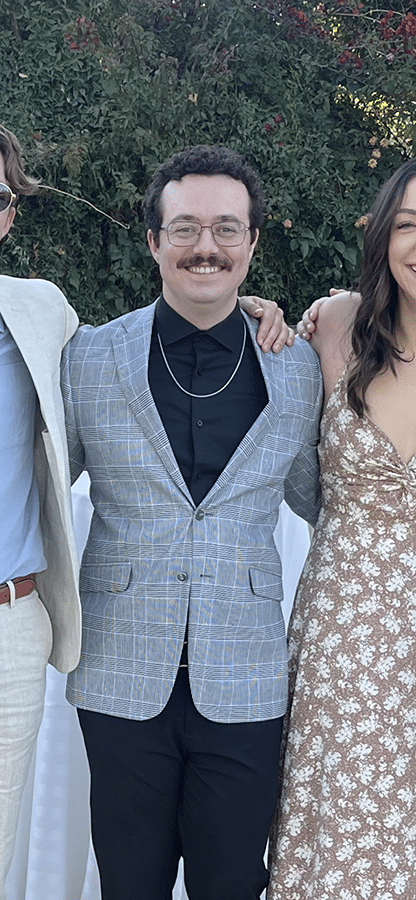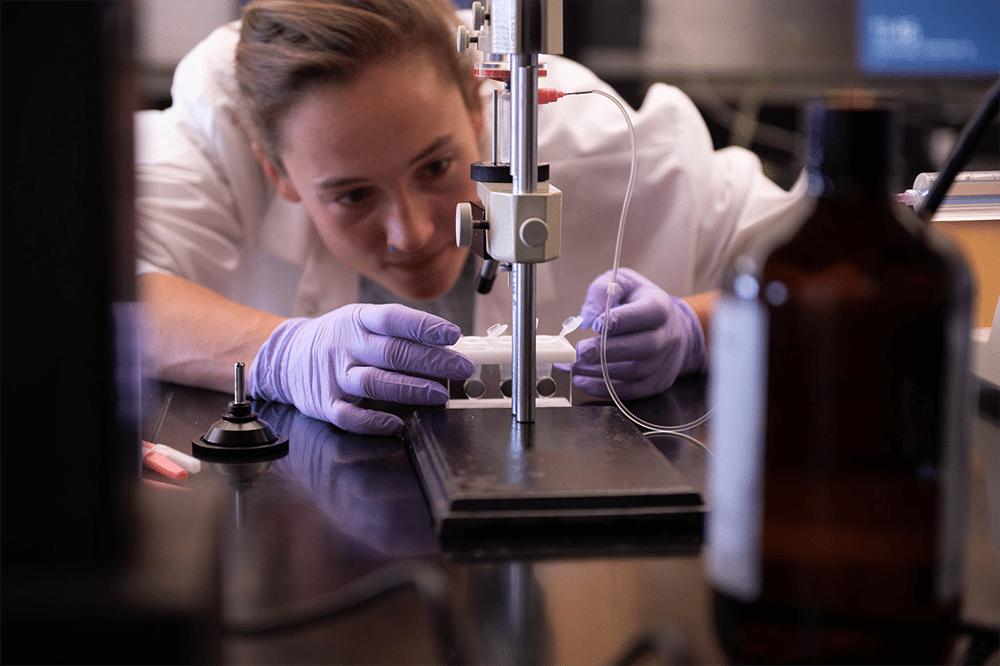Two NAU students were selected for a prestigious research program through the U.S. Department of Energy, which will give them the opportunity to do groundbreaking research in a national lab.
John Dallyn, a Ph.D. student in applied physics, and Raina Fitzpatrick, a Ph.D. student in biology, are among the 87 students selected for the Office of Science’s Graduate Student Research (SCGSR) program. The aim of the program is to prepare students to enter jobs that are critically important to DOE’s mission and will help secure the United States’ national position at the forefront of discovery and innovation.
“These awards recognize outstanding student achievement in their work with national laboratories,” said Maribeth Watwood, dean of the Graduate College at NAU. “The program is highly competitive, and NAU students’ success, though not surprising, is delightful. These students will be well-poised to launch into impactful careers thanks to the prestige of the SCGSR award and, most importantly, the outstanding work of these students at our nation’s national laboratories.”
John Dallyn, Sandia National Laboratories 
Dallyn’s doctoral research is on the theoretical modeling of Brillouin laser dynamic; the Brillouin laser is a type of laser produced by the scattering of coherent light off of sound waves. He plans to graduate in 2025.
His work at Sandia will be on theoretical models for a new type of device called acoustoelectrically enhanced Brillouin (AEB) devices. AEB devices allow for dynamic control of the Brillouin scattering process by applying electric fields coupled with sound waves in the device to modulate the lifetime of the sound waves.
Working at Sandia National Laboratories also will allow for experimental experience in the designing and fabrication process that he otherwise wouldn’t be able to do.
“One of the DOE Office of Science Mission Areas is in the realm of microelectronics, and the integration of highly coherent light sources onto chip platforms is a key part of that research area,” he said. “Brillouin lasers are well-suited to the chip-scale, and the development of AEB lasers will improve the performance of Brillouin-based, microelectronic platforms, such as chip-scale atomic clocks or new transmission and receiver links for a modernized and more energy efficient data center interconnect.”
Working at Sandia after graduation is on Dallyn’s list, so this opportunity will help him with that decision, he hopes.
 Raina Fitzpatrick, Lawrence Berkeley National Laboratory
Raina Fitzpatrick, Lawrence Berkeley National Laboratory
Fitzpatrick’s research is in microbial growth and mediation of element cycling in different ecosystems including freshwaters and soils. Her work at LBNL will be in Belowground Biogeochemistry scientific focus area measuring how microbial nitrogen cyclers respond to warming.
“I will be using isotope tracers to measure which microbes are transforming nitrogen, and the rates of these processes, at one of the nearby field sites,” she said. “This falls under the DOE’s Biology and Environmental Research program, which is aiming to promote research in biogeochemical cycles that may help us develop new solutions for problems like climate change.”
After graduating, she wants to continue researching microbes and the biogeochemical processes they catalyze, either at an academic institution or in another research institution.
“In addition to being an incredible honor for our students to be selected for the SCGSR program, it’s also an incredible opportunity—national laboratories offer a completely different kind of scientific atmosphere and training environment than a university setting, and this experience will be outstanding preparation for these students’ future scientific careers,” Vice President for Research Jason Wilder said.





 Raina Fitzpatrick, Lawrence Berkeley National Laboratory
Raina Fitzpatrick, Lawrence Berkeley National Laboratory